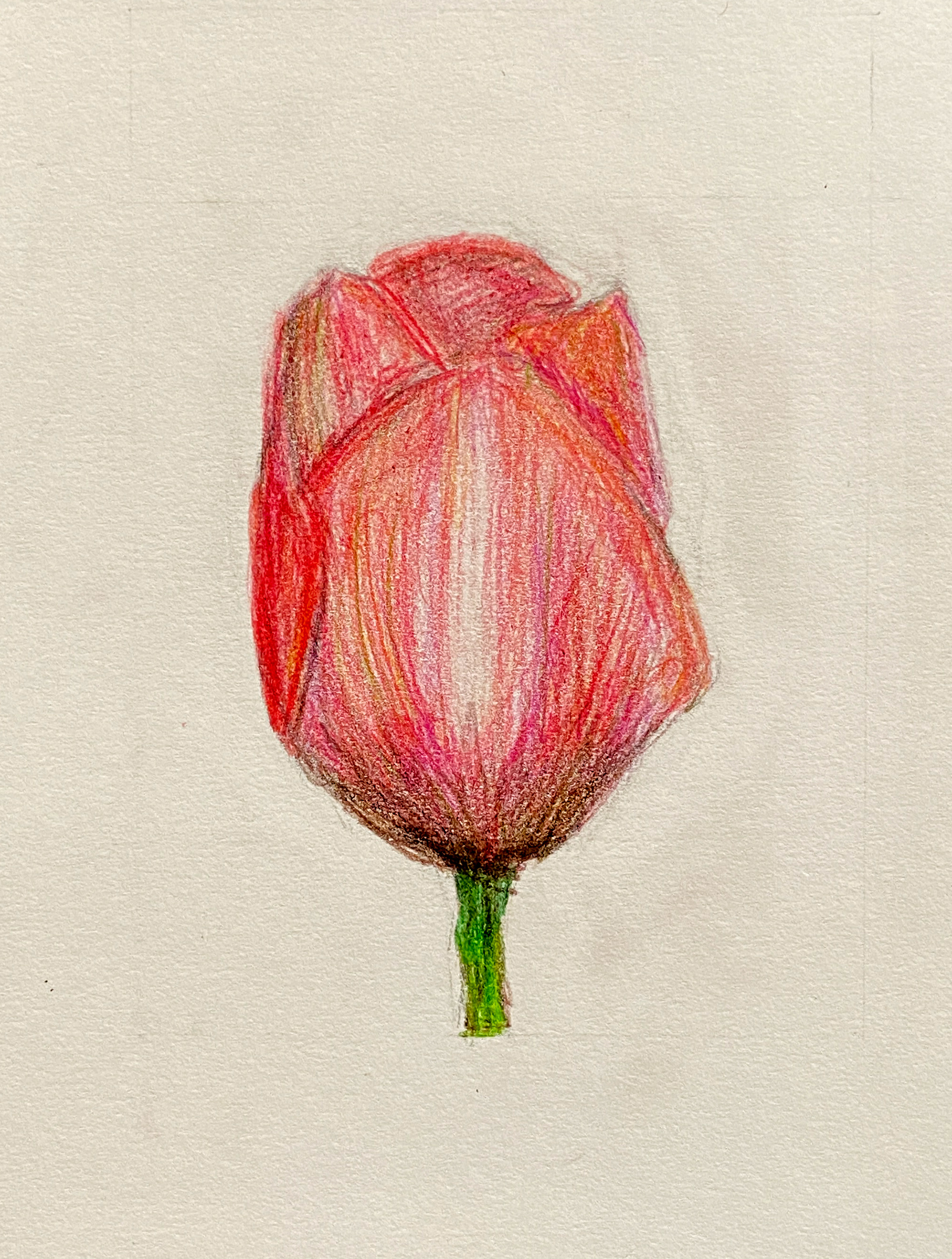Learning Objectives:
• Learn how to apply gradients in colour to a drawing
• Learn how to blend from one colour into another using coloured pencils
• Understand how new colours can be mixed by blending or layering colours
• Learn how to blend from one colour into another using coloured pencils
• Understand how new colours can be mixed by blending or layering colours
What you will need:
Sketching paper (or your sketchbook), a soft pencil (preferably 2B or 4B), colouring pencils, eraser and a pencil sharpener.
Your Task:
Now that you have practised creating gradients in colour, you can choose from one of the following drawing options:
Option 1:
Look for an object in your house that has colour and gradients on it and then draw and colour it in your sketchbook. Pick something you haven't drawn before and don't pick anything too difficult to draw, as the focus of today's lesson is to create gradients.
Examples of objects you might consider include:
• Flowers and leaves
• Fruit
• Vegetables
• Toys
• Bottles, vases or other containers
• Fruit
• Vegetables
• Toys
• Bottles, vases or other containers
Option 2:
If you are struggling to find a suitable object, have a go at the same flower I drew. Tap on the image to the right to enlarge or download it.

Photograph

My drawing
Video demo:
Below is a time-lapse of my drawing. Notice how many different colours I use and how they are all layered over and over again until I get to a point where I am happy. It takes a lot of patience, so don't rush!
Top marks will go to the drawings that show the smoothest, most varied
gradients and where several colours are layered up to make new colours
gradients and where several colours are layered up to make new colours
Top Tips:
• Keep your pencils sharp and hold them at a shallow angle to the page to avoid 'scribble lines' appearing
• Keep your shading lines so close together that they are touching one another to make your shading ultra smooth
• Layer your colours gradually, as applying too much pressure too quickly can make your gradients look scribbly and not smooth enough.
• Harmonious colours are a lot easier to blend than complementary colours because they are similar to one another. If you try to blend colours that are opposite one another on the colour wheel you may need several gradients to avoid creating a brown. E.g. Yellow and purple make brown when mixed, but alternatively you could blend from yellow into orange, then orange into red and finally red into purple.
• Control the thickness of your pencil lines by applying different amounts of pressure to the page.
• Keep your shading lines so close together that they are touching one another to make your shading ultra smooth
• Layer your colours gradually, as applying too much pressure too quickly can make your gradients look scribbly and not smooth enough.
• Harmonious colours are a lot easier to blend than complementary colours because they are similar to one another. If you try to blend colours that are opposite one another on the colour wheel you may need several gradients to avoid creating a brown. E.g. Yellow and purple make brown when mixed, but alternatively you could blend from yellow into orange, then orange into red and finally red into purple.
• Control the thickness of your pencil lines by applying different amounts of pressure to the page.
Examples of previous students' drawings:
What do you think has gone well and what could have been improved?











